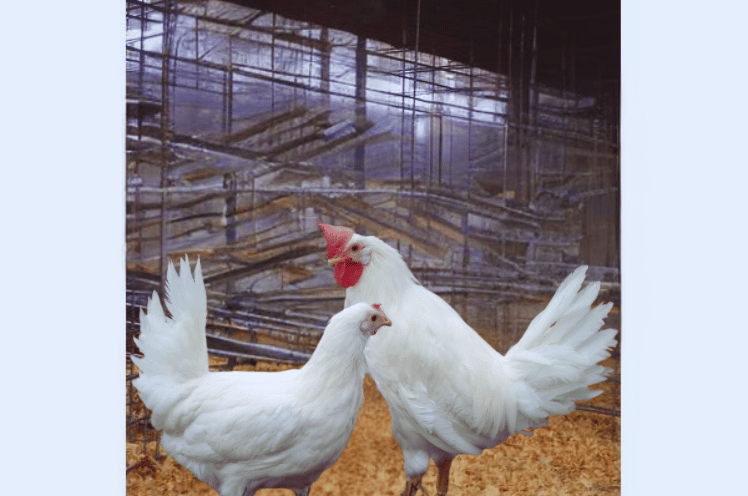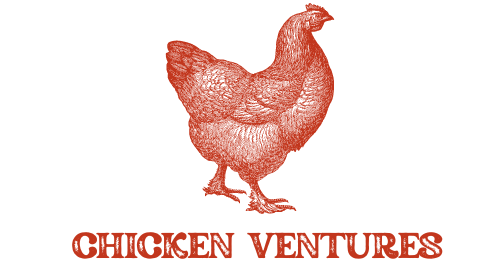Remember Foghorn Leghorn Chicken? That rooster from the cartoons that kids loved so much was from Looney Tunes. The world may have heard of him more than any other Leghorn chicken. Leghorns is the name that these beautiful birds used to be called, but it has been changed over the years.
This piece will discuss the history, personality, and behavior of the Leghorn before discussing how well it lays eggs and whether it’s a good fit for your flock.
Read on to find out more about this pretty bird that lays a lot of eggs.
Overview Of Leghorn Chicken
| Class | Mediterranean |
| Type | Standard, Bantam |
| Temperament | Intelligent and noisy |
| Broody | No |
| Space per bird | 3 feet per bird |
| Heat Hardiness | Yes |
| Beginner Friendly | No |
| Eggs per year | 280-320 |
| Egg Size | Large to Extra Large |
| Egg Color | White |
| Dual Purpose | Yes |
| Lifespan | 5-7 years |
| Processing Age Ready | 18-20 weeks |
History Of Leghorn Chicken
No one knows for sure where the Leghorn came from. In Tuscany, Italy, there were a few small kinds of landrace chickens. The Leghorn came from one of these. The English word Livorno is where the name Leghorn comes from. The Leghorns came to the US for the first time from Livorno, Italy, around 1828. No one knows what happened to these early birds.
Someone named Captain Gates from the US brought Leghorns to the US. He stopped at Mystic Harbor in Connecticut. These birds are the ancestors of the Leghorns we know today.
The white Leghorn won the New York show in 1868 after the breed was improved in the US by breeding for a rose comb. The Leghorns were then sent to the UK around 1870.
This made it more like a breed that could do two different things. Even so, the Leghorn is still a thin bird that isn’t really good for eating.
In the end, these crosses made their way back to the US. Around 1910, the larger size made them more popular in the new poultry business.
Pretty soon after this, Leghorn fans split into two rival groups: those who liked the chicken just the way it was and those who put production above all else.
The section is still there today, and a few breeders are keeping the original Leghorn lines alive. Nowadays, most Leghorns are raised as commercial hens.

Appearance
A lot of people are surprised to learn that the Leghorn can be any color. When most people think of a Leghorn, they think of white.
They have either a single comb or a rose comb, which is another interesting fact. It was only possible for rose combs to survive the hard winters in the US. It was too cold for the big single combs to handle in the northern states in the winter. This breed is usually easy to spot because of its big, floppy hair. This breed’s white earlobes show that its eggs are white.
It has orange or red eyes and a yellow head. Their legs and skin are yellow, and their feet have four toes.
Everything about it looks long, sleek, and efficient, except for that one comb, which makes the bird look a little funny.

Standard
In 1874, the Leghorn family became the first people to join the American Poultry Association.
You can get them in normal or bantam sizes, with clean legs and a single or rose comb.
The Italian Association approves of 10 common types, but not rose combs.
- 1874: a single comb in black, brown, and white
- 1883: Rose comb in light and dark brown
- 1886: A white rose comb
- 1889: a red and black-tailed red Colombian single comb
- 1894: a single buff and silver comb
- 1981: bronze, silver, gold, and black rose combs
Men of this breed weigh 7½ pounds, and hens weigh 5 to 6 pounds. Male bantams weigh 1 kg, and females weigh 0.9 kg. As usual, there is a small difference in the weights of the different groups in each country.
Temperament and Disposition Of Leghorn Chicken
The Leghorn is a smart and clever bird that can find a lot of its food if it is free to roam.
They are busy, smart, and active birds that like to look for food. Leghorn Chicken can fly well and will sleep in trees if they can. They can be loud, so you shouldn’t put them on your city lawn.
Leghorn Chicken will live in a small space if you give them lots of room and things to do. They get bored quickly because they are active birds. Leghorns have a reputation for being loud and highly stressed, but this varies from strain to strain. Many Leghorn lines are not flighty, but they do avoid people.
When there are a lot of different types of a breed, it’s hard to say what all of them are like. Ask the seller about the parents’ personalities if you can. This will give you the best idea of what your chicks might be like as they grow up. They will be more friendly to people if you touch the chicks a lot but don’t expect to turn them into lap chickens.
Egg Production Of Leghorn Chicken
Animal farms that raise chickens for profit love the Leghorn hen. Every year, she’ll lay between 280 and 320 eggs. Four or more eggs a week, that’s a lot of eggs! People say that they lay eggs well into their third or fourth year.
Each egg she lays is about 55g (2 ounces) and has a white shell. Her eggs get bigger as she ages, so they may be big at first and even bigger by the end of her fertile season. Leghorns were bred to lay eggs, not to raise chicks, so it is very uncommon for one to do either. They shouldn’t lay eggs, so you will need to turn on the incubator if you want chicks.
The chicks start to feather up and grow up quickly as soon as they hatch.

Health Issues
There aren’t any “common” health problems with the Leghorn hen. It is busy and strong.
Because their combs can get so big and floppy in the winter, you might need to buy a jar of Vaseline to keep the combs and wattles from getting frostbite. You could also get the rose comb types.
Is The Leghorn Chicken Right for You?
In general, the Leghorn is not the kind of chicken you want if you want something soft and nice. Some people say their Leghorn is very nice and cuddly, but most people don’t agree.
They came from being wild landrace birds and have kept some of their freedom.
The Leghorn is the bird for you if you want a hen that layers a lot of eggs every day but doesn’t eat that much. If they can free-range, the ratio of food to eggs is one of the best around.
Leghorns can be nervous, flighty, or shy, so I wouldn’t let little kids get too close to them without an adult.
Summary
The Leghorn has great proportions and is sleek and well-designed. Because it is so good at laying eggs, this chicken is, unfortunately, one of the most mistreated in the poultry business.
If chicken owners can find new homes for these hens that used to work in factories, many of them get a second chance at life. People who have taken these birds say they are lovely animals. As a garden hen, it will do well because it will lay a lot of eggs for not much food.
They might not be very loving and are not really a “pet,” but they can keep you company and give you hours of chicken TV.

